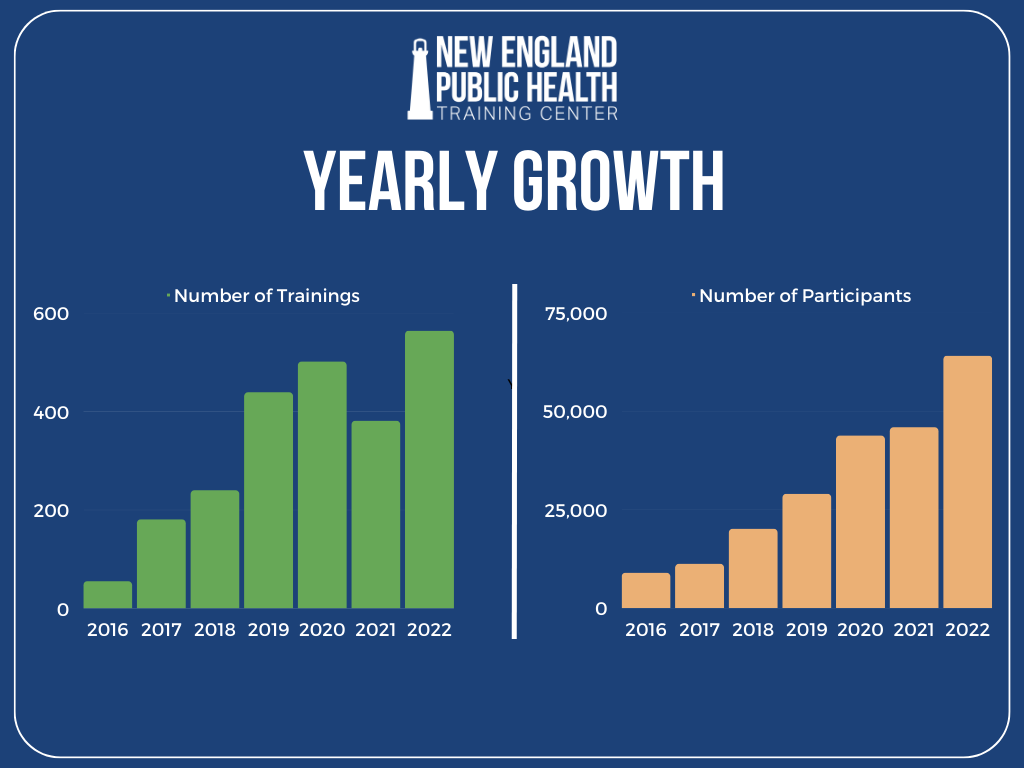At year end, NEPHTC Humbly Reports Training Performance Numbers
Five years ago, the New England Public Health Training Center (NEPHTC) never would have predicted that we would be announcing 64K participants for a fiscal year. But, as of June 30, 2022, we humbly report that we had 64,109 participants enrolled in 564 trainings. This success could not have happened without our partners, and we want to thank them for helping us reach so many trainees. Despite our limited budgets, our partners are helping us achieve our goals with their enormous knowledge of state health priorities combined with their strong organizational and community networks. We are forever grateful for their commitment to the grant outcomes, and we thank them for helping our center to grow again this year.

Anticipating what lies ahead: growth is unlikely to sustain and we must be aware that we work within a complex system.
Our humility stems from learning over time that these numbers are not just about good training, good marketing, and good relationships, though those all help. We are all part of the broader world of public health events and constrained resources. The core workforce is limited in size and has a lot of turnover, and the broader workforce has job roles and requirements buffeting and pulling at them from all sides. So, we and our partners do our best with assessments, and advisors, and funding to build what is needed, both urgently and foundationally, in many modalities. In reality, we expect our numbers to drop, as experts sometimes cancel events, the workforce has to attend to emergencies and has to put training on the backburner, grant funds flow unpredictably, and urgent needs to meet grant requirements or other emergencies drive activity. These forces come from Congress, infection, climate and natural events, and we are just there for the workforce, however we can help, by keeping up with rapidly changing tastes, attention spans, relationships with public health experts, partners and the community, and educational technology.
So, we share our chart, knowing that the past is not a great predictor of what will happen next year. Despite the great increase in training instances, our numbers might fall for many reasons. We can’t accept all the credit for increases, nor can we take all the responsibility for decreases.
